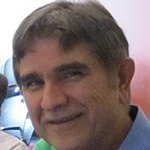Laser Amplifiers
A special issue of Photonics (ISSN 2304-6732). This special issue belongs to the section "Lasers, Light Sources and Sensors".
Deadline for manuscript submissions: closed (31 August 2021) | Viewed by 25677
Special Issue Editors
Interests: fiber optics, fiber lasers and amplifiers; organic photonics; 3D holographic display and 3D telepresence; nonlinear photonics; optical modulators and switches; laser spectroscopy; nanostructures and quantum dots
Special Issues, Collections and Topics in MDPI journals
Interests: specialty glass and optical fibers; single-frequency fiber lasers; high-power fiber lasers and amplifiers; short-pulse fiber amplifier; mid-infrared optical fibers; mid-infrared fiber-based supercontinuum sources; directed energy
Special Issue Information
Dear colleague,
In this Special Issue on Laser Amplifiers, we assemble contributions covering the most recent exciting developments in laser amplifiers. Diverse scientific fields and a broad spectrum of applications benefit greatly from novel and high-performance amplifiers in terms of their outstanding properties addressing wavelength ranges, spectral coverage and purity, average power, peak power, pulse energy, time duration, and many more. The assembled contributions are not exhaustive in the coverage of the field, but we consider them as important and noteworthy in taking the pulse of current developments and prospects for future work. Technical topics include but not limited to the following:
- Laser amplifiers – scientific foundations
- EUV-UV light generation and amplification using lasers
- Short pulse (fs) laser amplifiers
- High energy pulsed laser amplifiers – solid state
- High energy pulsed laser amplifiers – fiber
- High energy pulsed laser amplifiers – gas
- Single frequency highly coherent laser amplifiers
- Parametric fiber amplifiers
- KW-class laser amplifiers
- Mid-IR light generation and amplification by laser
Prof. Dr. Nasser Peyghambarian
Prof. Dr. Arturo Chavez-Pirson
Guest Editors
Manuscript Submission Information
Manuscripts should be submitted online at www.mdpi.com by registering and logging in to this website. Once you are registered, click here to go to the submission form. Manuscripts can be submitted until the deadline. All submissions that pass pre-check are peer-reviewed. Accepted papers will be published continuously in the journal (as soon as accepted) and will be listed together on the special issue website. Research articles, review articles as well as short communications are invited. For planned papers, a title and short abstract (about 100 words) can be sent to the Editorial Office for announcement on this website.
Submitted manuscripts should not have been published previously, nor be under consideration for publication elsewhere (except conference proceedings papers). All manuscripts are thoroughly refereed through a single-blind peer-review process. A guide for authors and other relevant information for submission of manuscripts is available on the Instructions for Authors page. Photonics is an international peer-reviewed open access monthly journal published by MDPI.
Please visit the Instructions for Authors page before submitting a manuscript. The Article Processing Charge (APC) for publication in this open access journal is 2400 CHF (Swiss Francs). Submitted papers should be well formatted and use good English. Authors may use MDPI's English editing service prior to publication or during author revisions.






